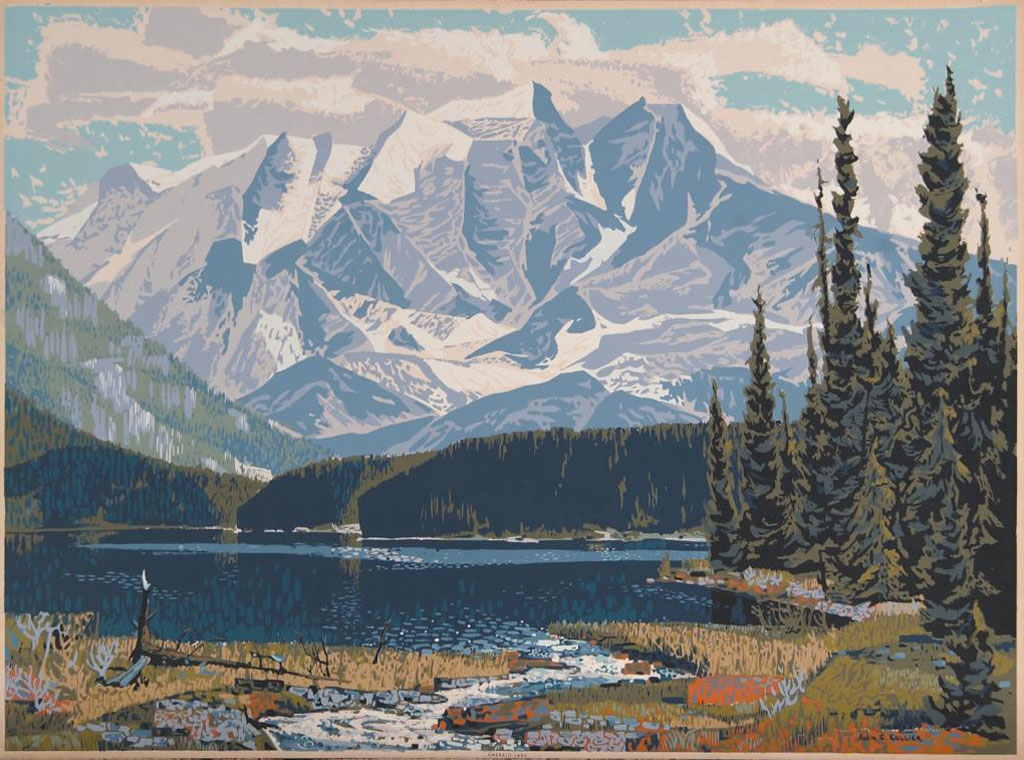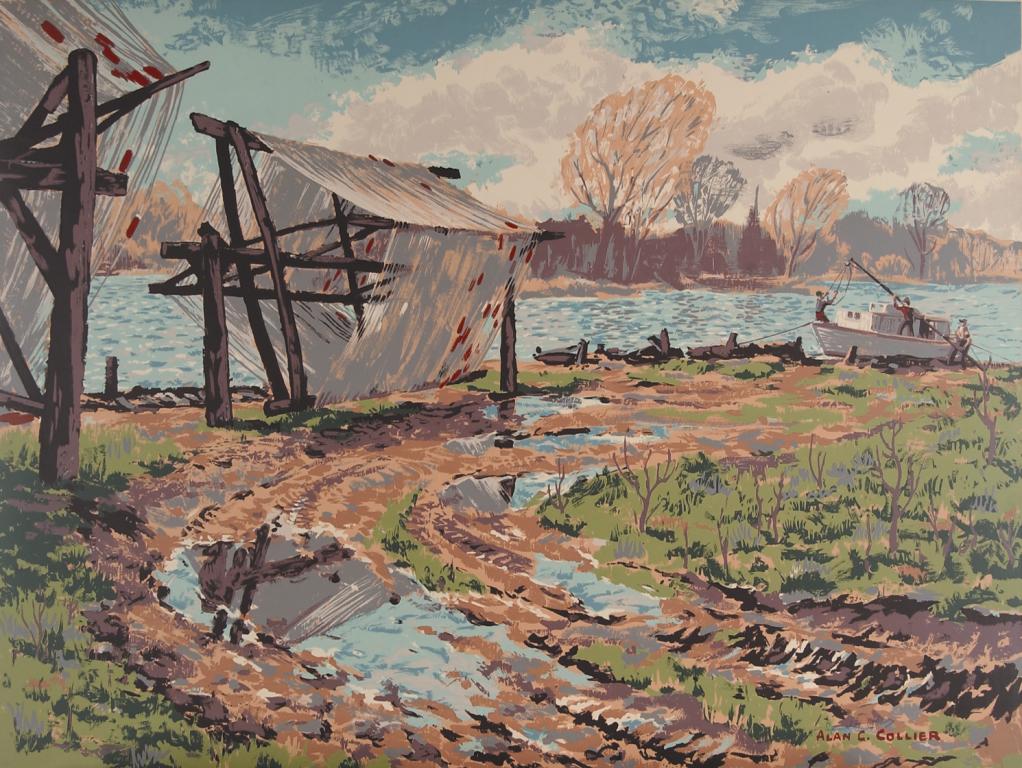Born in Toronto, Ontario, Canadian artist Alan Caswell Collier expressed an early interest in art. He attended the Ontario College of Art where he studied under J.E.H. MacDonald, Franklin Carmichael and others from 1929 to 1933.
In 1934 he traveled by train across Canada, then continued his studies in New York, working as a miner in the summer. On his return to New York in the fall of 1939 he became an advertising artist. After the war he resumed his career as an advertising artist in Toronto, but did more painting and less commercial work. His experience in mining led him to begin working on paintings of underground mining in 1951. In 1955, Collier joined the staff of the Ontario College of Art, where he taught advertising art.
In 1956, Collier made a three-month sketching trip to western Canada, a practice he followed every summer to most parts of Canada. Reviewing his work in 1961, Colin Sabiston noted, “Technically, Mr. Collier has reached a new peak of achievement, especially in his paintings. The paintings are redolent of rich color, full of the beauty any tourist may see but which only an accomplished artist can bring home, to share with those who see his work.”
In ‘Algonquin Lake’, Collier depicts a clear moment in an otherwise rainy season, with local fisherman taking the opportunity to dry their nets and launch their craft. A muddy rutted road reflects the drying racks and the bright sky. In the background across the lake, majestic trees still bereft of their branches sway in a gentle breeze. In Canada, this is a season of promise, the ground already turning green and the promise of a successful year on the water.
His ‘Emerald Lake’ can be seen as a result of his travels to western Canada, and the rich associations that Sabiston writes about are epitomized in it. The unique colour of water as can only be seen in high alpine lakes is reflected by that great peak rising majestically behind, the lake perimeter populated by evergreen trees. This is precisely the view that has come to identify the Canadian Rockies as such a great inspiration for artists, and a popular attraction for visitors, continuing to this day.
In 1963 Collier was awarded an eight-painting commission by Standard Oil of New Jersey, to depict the landscapes along the Trans-Canada Highway. In 1967 he resigned from the staff of the Ontario College of Art to devote himself to his painting on a full-time basis. In 1971, a retrospective exhibition of his paintings and drawings from 1935 to 1970 was organized by the Robert McLaughlin Gallery, Oshawa, and then shown in a number of Ontario galleries. He also received a number of large mural commissions and for two weeks of each year of 1984 and 1985 he sketched in the High Arctic as guest of the Polar Continental Shelf Project.
Collier exhibited widely and was a member of the Ontario Society of Artists (1952, President from 1958–1961) and the Royal Canadian Academy (Associate–1956, Member–1960). He is represented in numerous public collections including; the National Gallery of Canada; the Art Gallery of Ontario; the Art Museum of London; the McLaughlin Gallery and the Tom Thomson Gallery.

